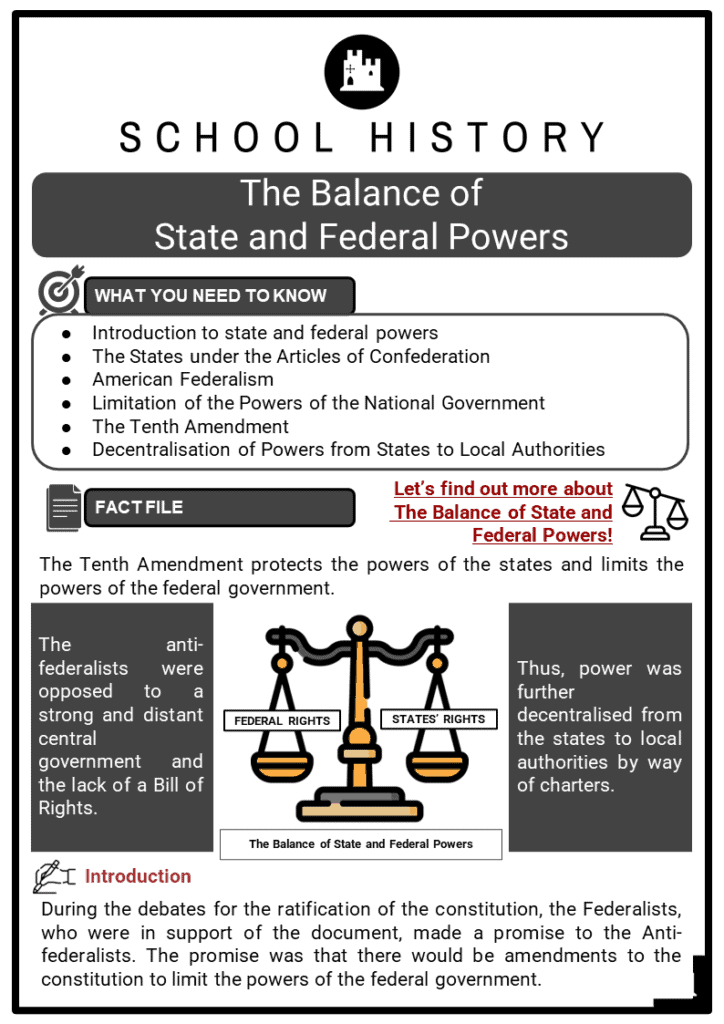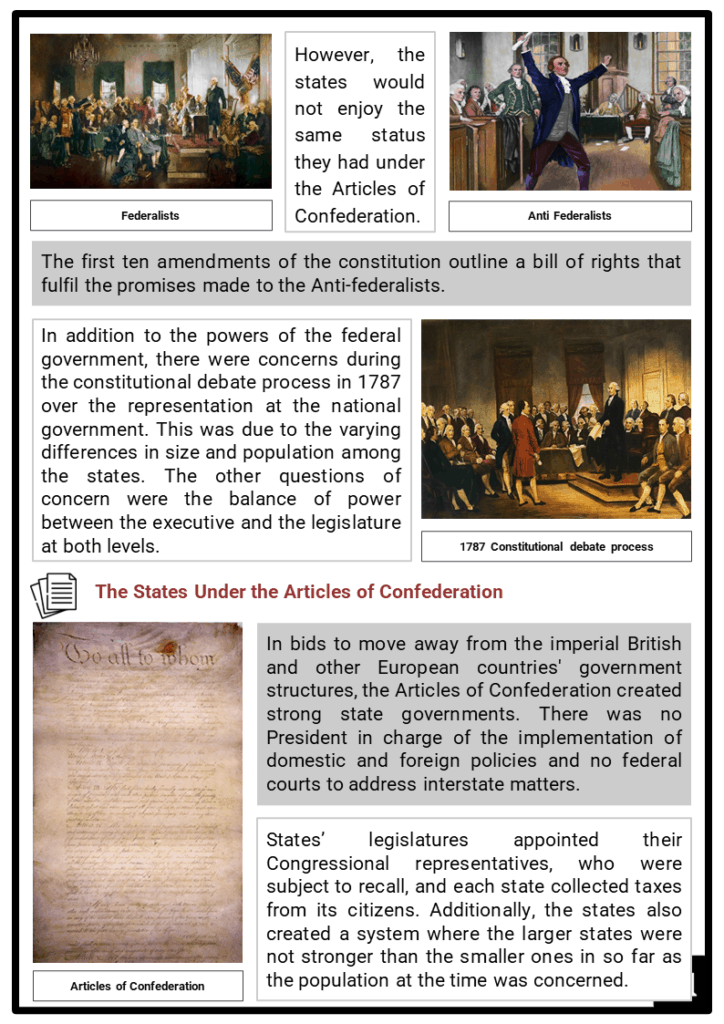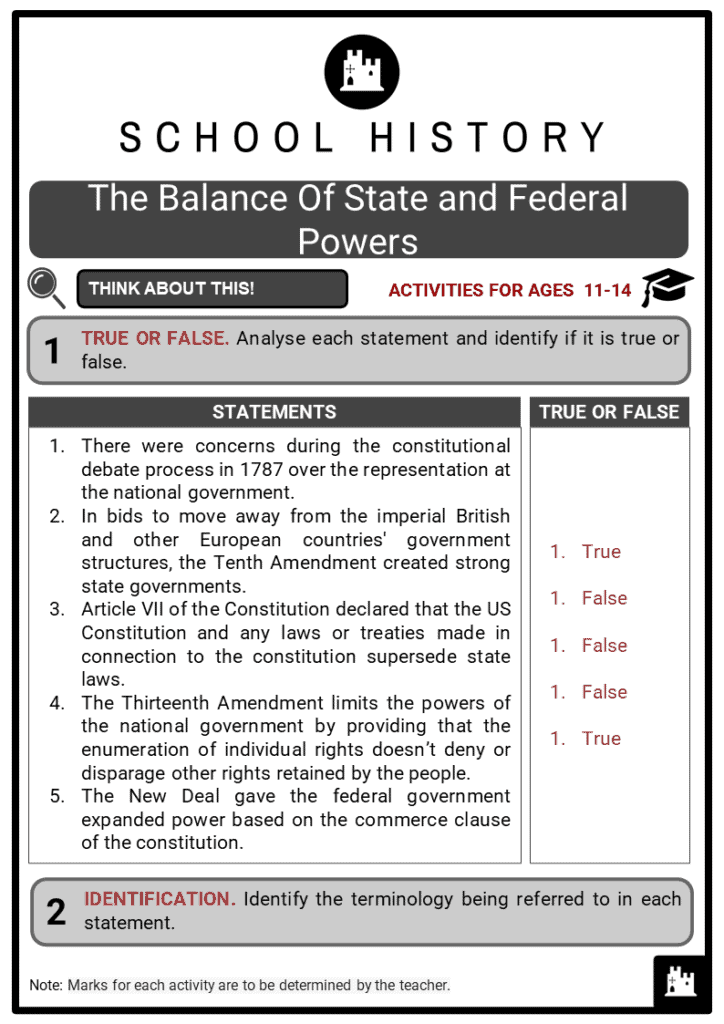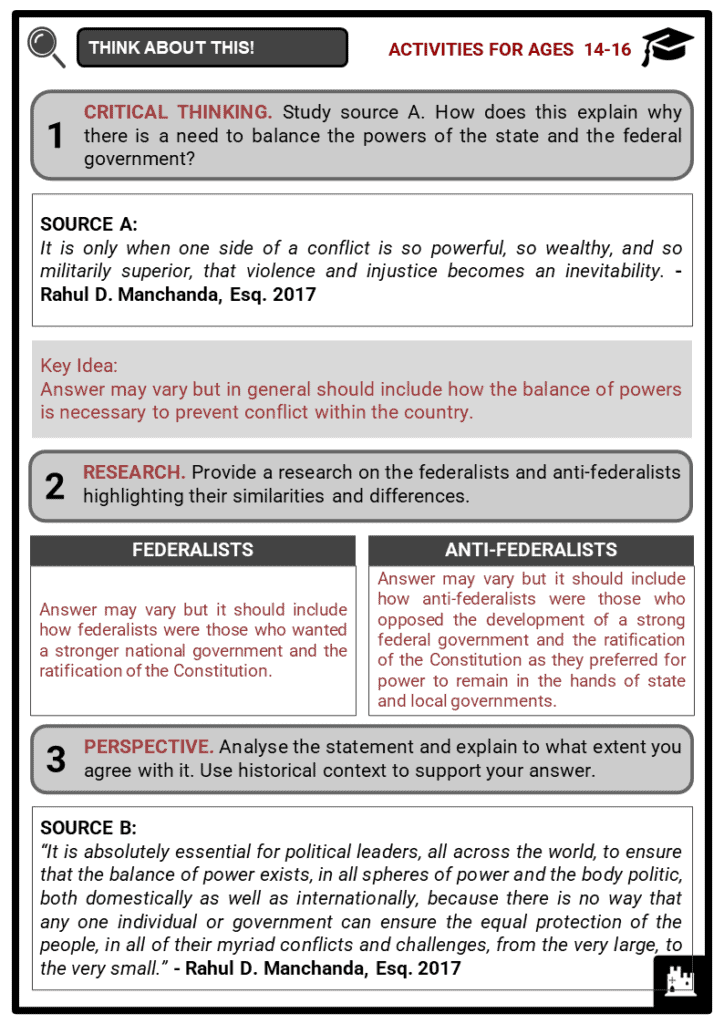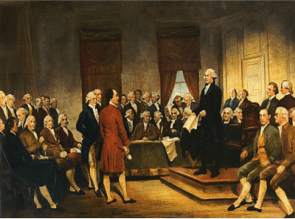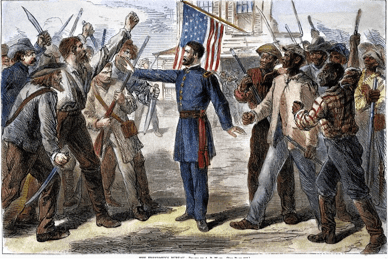Download The Balance of State and Federal Powers Worksheets
Do you want to save dozens of hours in time? Get your evenings and weekends back? Be able to teach The Balance of State and Federal Powers to your students?
Our worksheet bundle includes a fact file and printable worksheets and student activities. Perfect for both the classroom and homeschooling!
Table of Contents
Add a header to begin generating the table of contents
Summary
- Introduction to state and federal powers
- The States under the Articles of Confederation
- American Federalism
- Limitation of the Powers of the National Government
- The Tenth Amendment
- Decentralisation of Powers from States to Local Authorities
Key Facts And Information
Let’s find out more about The Balance of State and Federal Powers!
- The Tenth Amendment protects the powers of the states and limits the powers of the federal government.
- The anti-federalists were opposed to a strong and distant central government and the lack of a Bill of Rights.
- Thus, power was further decentralised from the states to local authorities by way of charters.
Introduction
- During the debates for the ratification of the constitution, the Federalists, who were in support of the document, made a promise to the Anti-federalists. The promise was that there would be amendments to the constitution to limit the powers of the federal government.
- However, the states would not enjoy the same status they had under the Articles of Confederation.
- The first ten amendments of the constitution outline a bill of rights that fulfil the promises made to the Anti-federalists.
- In addition to the powers of the federal government, there were concerns during the constitutional debate process in 1787 over the representation at the national government. This was due to the varying differences in size and population among the states. The other questions of concern were the balance of power between the executive and the legislature at both levels.
The States Under the Articles of Confederation
- In bids to move away from the imperial British and other European countries' government structures, the Articles of Confederation created strong state governments. There was no President in charge of the implementation of domestic and foreign policies and no federal courts to address interstate matters.
- States’ legislatures appointed their Congressional representatives, who were subject to recall, and each state collected taxes from its citizens. Additionally, the states also created a system where the larger states were not stronger than the smaller ones in so far as the population at the time was concerned.
- Therefore, each state had one vote at the Congress.
- However, the system had apparent weaknesses that undermined the potential for progress and success of the United States. State delegates, therefore, agreed to amend the constitution but instead designed a new system of government known as federalism.
American Federalism
- The new Constitution at the time, created a stronger federal government by creating the office of the President, as head of the executive and the Supreme Court, to head the judiciary. The constitution provided for express power of the Executive and Congress in Article I, section 8 and Article II, sections 2 and 3.
- The Commerce Clause of the constitution also empowered Congress to regulate trade between the US and other nations and even among states.
- The Necessary and Proper clause, on the other hand, gave Congress broad powers, “to make all laws which shall be necessary and proper for carrying into Execution the preceding Powers, and all other Powers vested by this Constitution in the Government of the United States, or any Department or Officer thereof.”
- The necessary and proper clause is also called the Elastic Clause as it confers upon Congress other implied powers.
- The elastic clause has been used over time to justify the federal government’s intervention in policy matters on issues such as healthcare, as well as the expansion of the power to levy and collect taxes. These functional areas are considered to be state functions.
- Article VI of the Constitution declared that the US Constitution, and any laws or treaties made in connection to the constitution, supersede state laws. This provision is known as the Supremacy Clause.
- However, states still had a lot of autonomy under the new Constitution, including the power to establish local governments and outline their structure, functions, and responsibilities in their state constitution. The states, therefore, have sovereignty over a county, municipal, school, and other special districts. The states also have powers to ratify amendments to the constitutions by a three-fourth minimum margin.
- During the time leading up to the tenth amendment in 1971, the states perceived that the federal government had an insatiable hunger for increasing power. Congress in particular, with authority over the budget, and therefore resources of the nation, used that power to coerce the states to take specific actions or decisions. Thus, the Tenth Amendment was included in the Bill of Rights to create a class of powers, known as reserved powers, exclusive to state governments.
Limitation of the Powers of the National Government
- Cognizant of the overreaching federal government, the Tenth Amendment reaffirms the role of the federal government within the US democracy. By proposals from the states, the amendment provides, “the powers not delegated to the United States by the Constitution, nor prohibited by it to the states, are reserved to the states respectively, or the people.”
- The objective was to limit the powers of the federal government to those expressly provided by the Constitution.
- The amendment which establishes the federal structure of the US government was supposed to affirm that the states have general powers and the federal government only has delegated powers.
- Furthermore, the amendment read together with Article 1 of the Constitution means that powers granted to the federal government are exclusive. This means states cannot exercise such powers given to the national government. Article 1 provides that the states’ governments, in addition to powers not granted to the federal government, have powers granted to them by their respective state constitutions.
- The framers hoped to respond to the historical realities in England and the greater Europe which had a distant, central, and powerful national government with weak local governments.
- However, it was not a state proposal to include the phrase, “or the people” into the text of the amendment. The inclusion of the people into the amendment made it less about state rights contrary to the wishes of the states.
The Amendments
- The Ninth Amendment also limits the powers of the national government by providing that the enumeration of individual rights doesn’t deny or disparage other rights retained by the people.
- During the Reconstruction, the Republicans in Congress at the time did infringe on state rights especially with the Thirteenth, Fourteenth and Fifteenth Amendments. The federal government obtained powers to protect individual liberties against the laws and attitudes of the states.
- The Thirteenth Amendment outlawed slavery and the Fourteenth Amendment intended to make naturalised slaves and their descendants as American citizens.
- This was contrary to the Dred Scott decision that provided slaves, and their descendants, are not American citizens.
- The New Deal was a series of policies and programs meant to improve the economic situation of the country. Through this, there is an evident shifting of powers between the states and the federal government in the interpretation of the Tenth Amendment.
- The New Deal gave the federal government expanded power based on the commerce clause of the constitution. The argument at the time was that the Tenth Amendment could not object to a right articulated by the constitution. Whereas that is true, the danger is that an ever-expanding interpretation of the exclusive functions of the national government undermines the spirit of the Tenth Amendment.
- William Rehnquist, Chief Justice from 1986 – 2005, corrected the position of the powers of the national government since the new deal. The Tenth Amendment has since been applied in the spirit to curtail the powers of the federal government as intended by the framers.
Decentralisation of Powers from States to Local Authorities
- The U.S Constitution doesn't prescribe powers of local authorities but provides that states shall have such powers as granted by their respective Constitution. To facilitate service delivery, states have created local authorities unto which some functions of the states are delegated. This structure is called the Dillon Rule, named after Iowa Supreme Court Justice F. Dillon.
- According to the Dillon Rule, states have supremacy over local authorities in the same way the national government has power over the states. Therefore, cities and towns exist at the prerogative of the state - meaning that the states can dissolve them at will. However, for service delivery to be effective, the federal government, states, and local authorities must cooperate.
- The supremacy of states over local authorities is called the Home Rule, and the delegation of functions to the former is by way of a charter.
- The charter, which is binding in the manner of constitutions, provides a framework for local government responsibilities and transfer of finances because funds follow functions and areas of authority.
Image sources:

